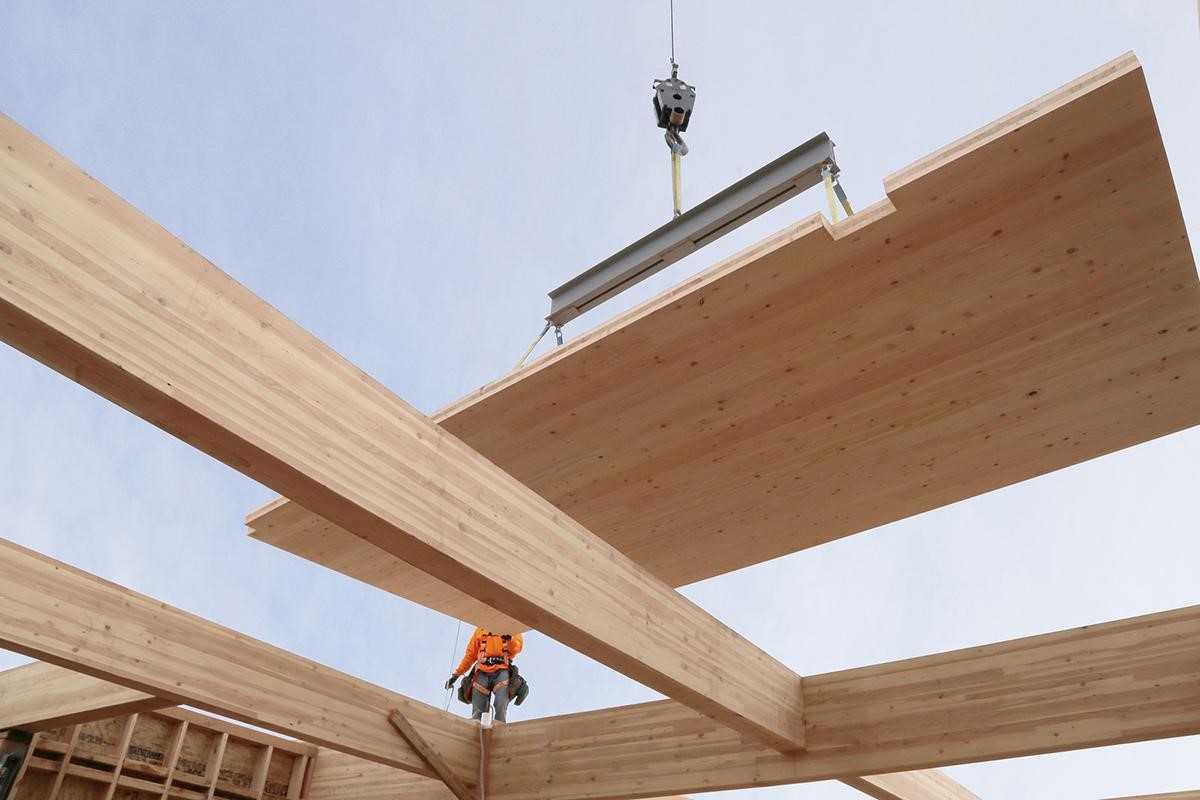
Choosing the right building materials can take a project from energy efficient to environmentally sustainable. Cement and concrete make up 8% of worldwide emissions, while steel and iron make up 6-8%. Not only are these carbon intensive materials, but they also release VOCs which negatively impact both indoor and outdoor air quality. To help mitigate and VOC emissions, keep an eye on these relatively new sustainable building materials: low concrete, mass timber, and hemp.
Low Concrete
Concrete is the number one source of embodied carbon in buildings. While the technology is still being perfected to minimize the footprint of concrete, several companies do provide products that range from low carbon to zero carbon. Recent efforts to reduce the emissions of concrete include: sequestering during cement creation and trapping it into cured concrete, using low temperature and low energy processes during cement production, incorporating recycled fly ash or steel slag into cement mixes to decrease intensive portland cement, and utilizing geopolymer cement mixes instead of traditional portland cement. All of these alternatives tend to alter either the strength or durability of the concrete in various ways. Thus, it can be an intensive task to determine where in a project concrete must be used and what if any type of low concrete can be utilized.
Mass Timber
Mass timber is a low carbon alternative to concrete or steel referring to composite wood systems that combine multiple pieces of wood in order to increase the wood’s tensile and compressive strength. Mass timber can be utilized for load bearing walls and allows wood structures to be much taller than previously possible. Incorporating mass timber into building designs can improve a buildings carbon footprint, provide the mental health benefits of biophilic design, improve building acoustics, and better withstand earthquakes. Still, mass timber, like all wood products, does emit VOCs and aids in deforestation.
Hemp Blocks and Insulation
The newest sustainable building material to watch out for is hemp. Hemp can be utilized in blocks or as insulation. Depending on the internal block structure and hemp mix, hemp blocks can be as strong as some concrete mixes. Hemp blocks made with limestone mixes can actually be carbon negative as it sequesters over time. They are also completely fireproof and will not deform in the event of heat waves unlike steel or concrete. Hemp also does not emit VOCs. Likewise, the lifecycle of hemp is around 90 days, making it a much more renewable resource than trees. In terms of insulation, non-toxic hemp can be 10 times more insulating than traditional insulation, reducing building energy costs over its entire lifecycle. Still, hemp blocks are not strong enough to solely comprise tall commercial buildings and will require other structural supports.
Contact The Dragon Group to discuss which sustainable building materials are right for your project.

